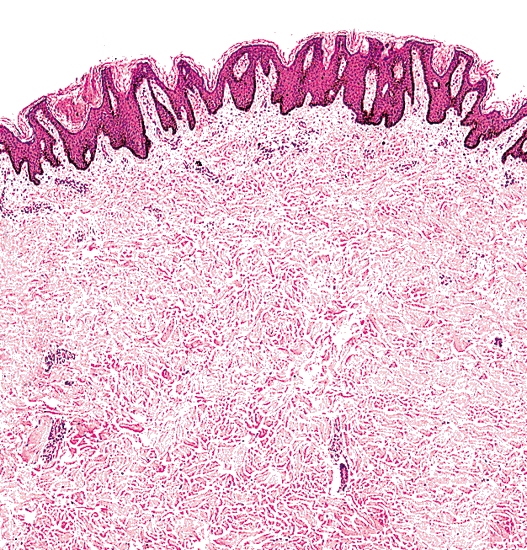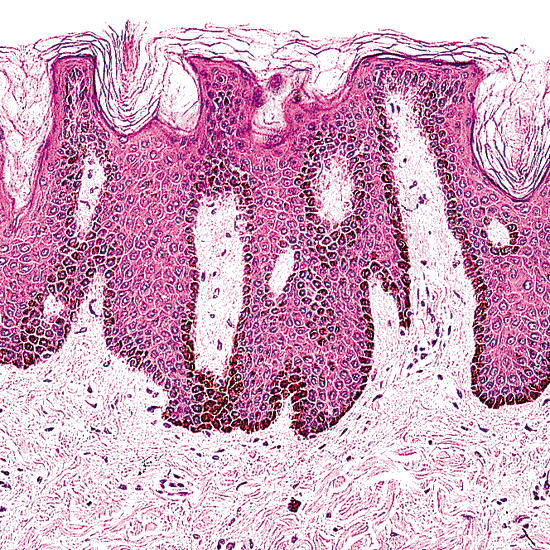Definition
Pigmented plaques formed by confluence of smooth-surfaced soft papules, some of which may become polypoid, traversed by accentuations of skin folds. This disease has a predilection for intertriginous regions. The condition may develop consequent to obesity, an endocrine disorder, or a malignant neoplasm in an internal organ. Morphologically, i.e., clinically and histopathologically, the appearance of the altered skin is the same, irrespective of cause.
Course
Acanthosis nigricans tends to persist unless its cause is identified and corrected. For example, lesions of acanthosis nigricans secondary to an endocrine disorder, such as diabetes mellitus or hypothyroidism, disappear when that abnormality has been remedied by appropriate hormonal therapy. Lesions consequent to the effects of a malignant neoplasm in an internal organ, such as an adenocarcinoma of the stomach or the colon, may regress entirely after complete surgical extirpation of the inciting neoplasm, if that neoplasm has not yet metastasized.
Therapy
Treatment of lesions of acanthosis nigricans themselves is ineffective. Therapy must be directed at the pathologic process responsible for the development of acanthosis nigricans, such as obesity, an endocrinopathy, or an internal malignancy.



